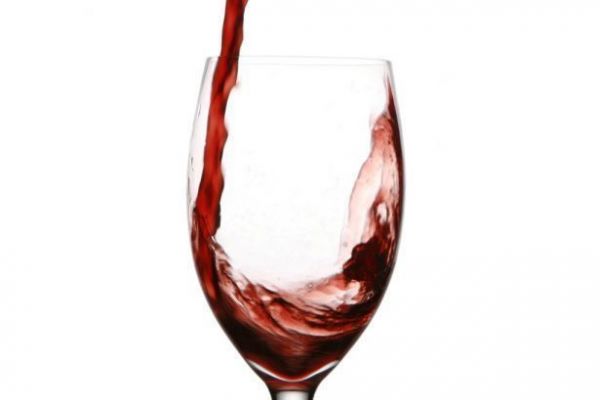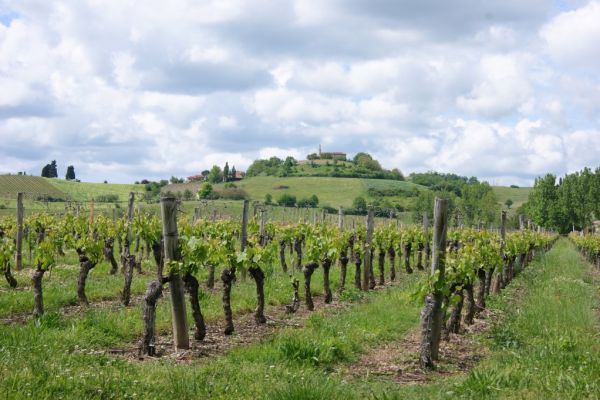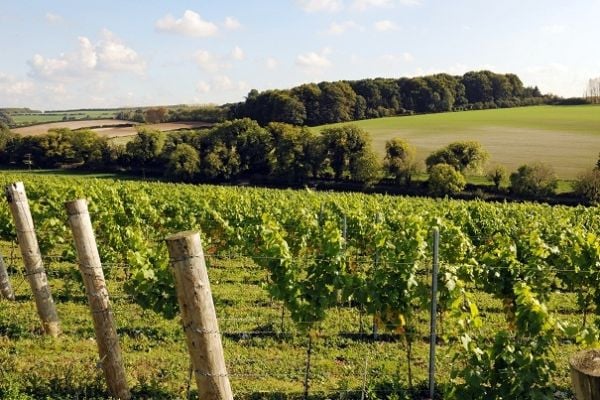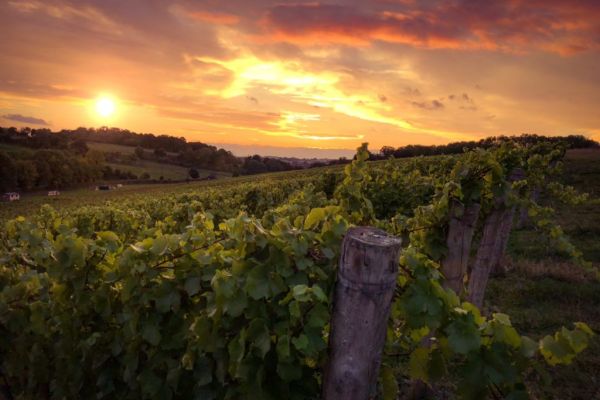Merlot was once the fan-favourite red grape and wine. Then came 2004 hit movie Sideways, in which Miles, the pinot-noir-loving main character, trashes the varietal before heading into a bar: “If anyone orders merlot, I’m leaving,” he explodes. “I am not drinking any f---ing merlot.”
Interest in pinot skyrocketed, while the reputation of merlot tanked. In California, growers pulled out more than 10,000 acres of merlot grapes.
Such is the power of Hollywood.
But wine fashions are fickle, and now velvety merlot is experiencing a comeback.
Sales of “luxury” versions of the red increased 5 percent over the past year, according to Nielsen, while a 2016 Wine Intelligence report found it was the No. 1 varietal of choice for American drinkers of all ages. Restaurants sold 8 percent more merlots costing $100 and up, according to Winemetrics 2016 Fine Dining Report.
Don’t thank hip sommeliers for this reputation rehab. Most are in love with every grape but merlot—for the wine-geek Instagram crowd, the more obscure the better.
To me, the reason merlot was bound to return to favour was simple: It’s very often delicious. Its silky, cherry fruit and round texture give it an immediate appeal that tannic cabernet, its nearest wine rival, doesn’t have.
A Grape’s Fall From GraceMerlot malaise was due to a lot more than Miles’s Sideways rant. Many California vintners responded to its popularity in the 1990s by rushing to plant more, often in places with the wrong soil and climate. A lot of those wines were simple and boring, or the opposite—too sweet, or amped up like flavour-bomb cabernets, with so much oomph and alcohol that drinking them was like getting a punch in the mouth.
John Williams, winemaker and owner of Napa’s Frog’s Leap, is convinced Sideways actually saved merlot, as those who had jumped on the bandwagon to cash in on the trend ended up pulling out bad vineyards.
At its peak in California, merlot accounted for nearly 60,000 acres of vines; now it’s down to a little more than 44,000. In recent years vintners have swapped in more popular cabernet vines, since those grapes and wines sold for more; others dumped their merlot into mass market brands and basic red blends.
But wineries that had long been devoted to high-quality merlot doubled down on cool clay soils, gentler winemaking, and less aging in new oak barrels to preserve subtler aromas and silkier textures. They worked hard to make and market the good stuff.
Merlot’s home territory, of course, is Bordeaux, where it’s by far the most planted grape and is typically blended with cabernet sauvignon and cabernet franc to soften its edgy tannins. It’s dominant in Saint-Emilion and Pomerol, where some wines, such as the legendary, wildly expensive Pétrus, are 100 percent merlot.
Merlot mania started in the 1990s. In 1990, Americans drank 800,000 cases of the stuff, but by 2000 the figure was 20.3 million, according to MKF Research Wine Trends Database. (It’s now 17 million.) Popularity spread the grape around the globe, from Chile to Italy to Japan, and today it’s right behind cabernet as the world’s second-most-planted red variety.
In fact, merlot is relatively easy to grow if all you want to make is simple, fruity reds. It ripens early in the season and isn’t prone to the kinds of vine diseases that plague other varieties. But it turns out to be more temperature sensitive than people realized—at least if you want to make great wines. If the season isn’t warm enough, the wine can taste green, but with current extreme summer heat waves, it quickly gets overripe, and the wines can have high alcohol and cooked fruit flavors. (Mass market brands solve this problem by blending wines from different places.)
A global band of vintners growing merlot in top spots has turned to social media to help rescue the grape’s reputation. The month of October is their fifth annual #MerlotMe celebration, with tastings and events planned in 41 states and 32 countries.
#Getonboard with these 10 top merlots.
2014 Bedell Cellars merlot ($22)
Owned by film producer Michael Lynne (The Lord of the Rings), the winery on Long Island’s North Fork is known for spicy, medium-bodied merlots (the 2009 was poured at President Obama’s 2013 inaugural luncheon). This vintage, with a label by artist Eric Fischl, boasts subtle aromas and dark fruit flavors. Look for the 2013, too.
2014 Januik merlot ($25)
Round and plush, this harmonious red from Washington State’s Columbia Valley overdelivers for the price. It’s multilayered, all bright plum and cherry flavors, with a dash of cocoa thrown in. A bit of cabernet sauvignon and cabernet franc add structure.
2013 Paumanok Grand Vintage merlot ($40)
Intense, elegant and juicy, this sexy red from Long Island’s North Fork has gorgeous fruit and concentration yet is delicious drinking right now. The vintage is one of the best ever for the region.
2014 Frog’s Leap Winery merlot ($40)
One of the first Napa estates to embrace organic grape growing, Frog’s Leap has long excelled at making balanced merlots. Very pure, plummy fruit and a sleek, lush, texture make this vintage, which contains a dash of cabernet, a standout.
2014 Ridge Vineyards Estate merlot ($55)
Most wine lovers know Ridge for its grand Monte Bello cabernet and savory zinfandels. But the winery in the Santa Cruz Mountains also makes this voluptuous merlot from the famed Monte Bello vineyard.
2012 Matthiasson Napa Valley Red Hen Vineyard merlot ($80)
One of Napa’s new wave winemakers, Steve Matthiasson rediscovered this vineyard at the base of Mt. Veeder in 2003. The merlot always shows a complex cherry, tobacco, and bay leaf fruitiness and a refreshing juiciness.
2013 Duckhorn Three Palms Vineyard merlot ($95)
A classic rich Napa Valley example, it’s a wine to revel in, juicy and succulent yet also structured to age, with deep, dense fruitiness. The 1978 was the first vintage from this famous vineyard named for century-old palm trees. (The winery’s merlot sales were up 31 percent last year.)
2013 Miani Filip merlot ($210)
In the northern Italian Friuli region, a handful of producers have been experimenting with merlot for decades. Cult estate Miani makes two rare examples from tiny vineyards. The savory Filip, with its mint and rose petal aromas, is the easier to obtain (and on the list at New York’s Del Posto).
2013 Masseto ($720)
Bold, opulent, and creamy-textured with notes of sweet fruit, licorice, and truffles, this Italian collectible, the most prized merlot outside Pomerol, has a strong personality and a stellar investment track record.
2014 Pétrus ($2,300)
This famous Bordeaux red is the planet’s ultimate merlot, velvety and sumptuous, with complex layers of dark red fruit and Asian spices and a cashmere-like texture. One secret to its greatness? Blue clay soil in the vineyard.









